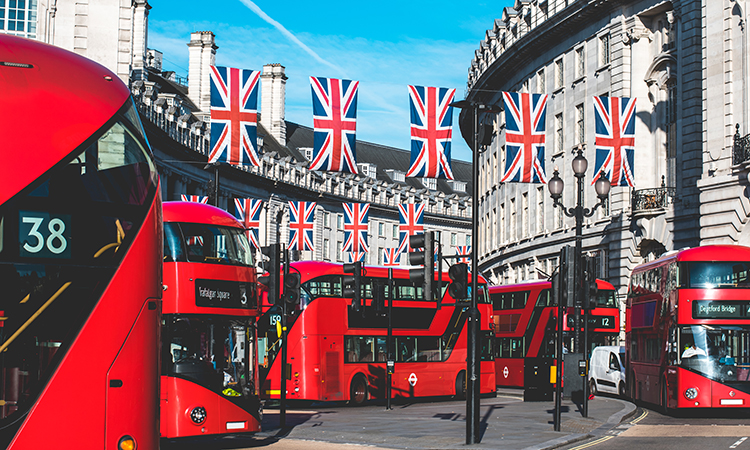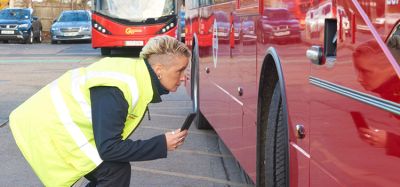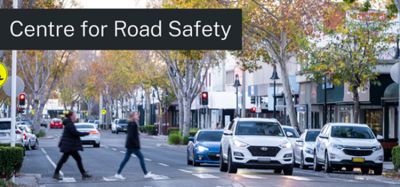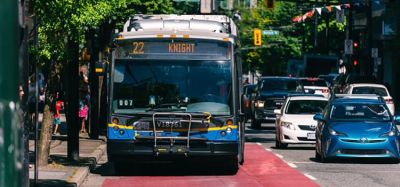Delivering a culture shift in bus safety throughout London
- Like
- Digg
- Del
- Tumblr
- VKontakte
- Buffer
- Love This
- Odnoklassniki
- Meneame
- Blogger
- Amazon
- Yahoo Mail
- Gmail
- AOL
- Newsvine
- HackerNews
- Evernote
- MySpace
- Mail.ru
- Viadeo
- Line
- Comments
- Yummly
- SMS
- Viber
- Telegram
- Subscribe
- Skype
- Facebook Messenger
- Kakao
- LiveJournal
- Yammer
- Edgar
- Fintel
- Mix
- Instapaper
- Copy Link
Posted: 15 October 2021 | Jane Lupson - Transport for London, Leah Hockley - Intelligent Transport | No comments yet
Jane Lupson, Senior Bus Safety Manager at Transport for London, has been pivotal in the development of and culture shift around bus safety in the UK capital city. As her time with TfL comes to an end after 15 years, she sat down with Intelligent Transport’s Leah Hockley to reflect on her efforts to achieve a safer bus sector and to consider what the future of the industry should look like.


Over the course of your time at Transport for London, you must have witnessed some significant changes in the way that the industry approached bus safety. In your opinion, what are some of the most important developments that have been experienced by the sector in this field?
The biggest change really has been around safety culture and how we’ve shifted from an expectation that safety is a price of doing business, and that there’s an expectation that injuries will always occur”
That’s a really great question, actually. I’ll talk about the Bus Safety Programme and Bus Safety Standard a little bit later, as a lot of that work has been big projects that are really trying to achieve a step change in safety and reduce the number of people killed and seriously injured by buses. But, actually, the biggest change really has been around safety culture and how we’ve shifted from an expectation that safety is a price of doing business, and that there’s an expectation that injuries will always occur.
London has a huge bus network and there’s a huge number of people in London – those two things are very difficult to control. It’s an open network, as well, compared to the railways, for example. But, really, to achieve that change in thinking so that no death or serious injury is inevitable or acceptable, and then actually embedding that thinking throughout TfL, as well as the bus operators and the entire industry – so that we’re really pushing the boundaries and always working to improve – is what links to the wider ‘Vision Zero’ for our road network in London.
In 2016, TfL launched its Bus Safety Programme, which was soon followed by the launch of the Bus Safety Standard in 2018. What was your role in this launch?
My background at TfL prior to working within the Buses Directorate as the Senior Bus Safety Development Manager was actually in road safety. That’s why I made the switch from looking at the whole of the road network to instead looking at putting together a safety programme specifically for buses.
We needed a programme of work designed to make sure that we were looking at the types of fatalities and serious injuries that we were seeing on the road network that directly involved in buses, as well as what could be done to reduce and eliminate them”
In the wider scheme of things, our focus at TfL has very much always been around vulnerable road users – cyclists, motorcyclists, pedestrians and so on. But, of course, buses are sadly involved in some of those unfortunate incidents with these vulnerable road users. We needed a programme of work designed to make sure that we were looking at the types of fatalities and serious injuries that we were seeing on the road network that directly involved in buses, as well as what could be done to reduce and eliminate them.
It was never going to be just one thing. We knew, even before TfL and the Mayor of London officially adopted ‘Vision Zero’, that the initiative existed. It originated in Sweden and it is based on the safe system approach, which includes safe vehicles, safe people, safe behaviours, safe streets, safe environment and safe speeds, and then also the post-collision response. When we have these incidents, how do we learn from them so that they don’t happen again? The programme was built up from that point.
I was on my own to start with, working on improving bus safety. I was on secondment, actually, in the role. But, as the programme developed and grew, I formed a team. There’s now five of us in the team, but that’s only within bus safety. As you can imagine, we work with people all across TfL, but also within the bus operating companies, bus manufacturers and our stakeholders, as well. We call ourselves the ‘bus safety family’, because once you’ve gotten involved in this project, even if it isn’t your official job role, people tend to stay involved, which is really nice, because I think that people feel very strongly about it – and that’s one of the great things about working in the team and in the wider matrix team, too.
Why was it important that TfL developed the Bus Safety Standard, and how did it impact the industry?
From my work in the wider road safety policy area, we know that, to make the biggest strides and improvements to road safety, making changes to the vehicle gives us the best return for casualty reduction. We’ve seen that in the car industry – over the years, the number of deaths and serious injuries in London have dropped significantly because of improvements in car technology. But, for whatever reason, that technology wasn’t really transferring over to buses. It had transferred over to HGVs, though at a slightly slower rate, but buses had very much been left behind. So, we could really see that that was an available opportunity, although it wasn’t going to be a quick win, certainly.
We had to look at what types of fatalities and serious injuries were occurring, in order to make sure that the technology that we were fitting to buses was actually going to either prevent the incidents or lessen their severity”
When developing the Bus Safety Standard, we looked at the clear evidence – that was a really key point for us. We had to look at what types of fatalities and serious injuries were occurring, in order to make sure that the technology that we were fitting to buses was actually going to either prevent the incidents or lessen their severity.
TfL is very innovative; we’re always pushing the boundaries, and we like to be first in the world at things. While our Bus Safety Standard didn’t invent things in terms of safety, we were the first to say, “All right, we want to set our stall out and say, we want all of these things at the same time on our vehicles”, and then set out a clear roadmap for when those features were going to be fitted. It really was a big change in the safety of our vehicles.
This progress obviously takes time. The technology features on new vehicles, predominantly. Because the vehicles stay in London for between 12 and 14 years – until they reach the end of their life – it means that these new safety features can’t be introduced overnight. But we’re looking at ways that we can retrofit the existing vehicles, because we always want to be making sure that we can get those safety benefits quicker.
What are some of the most innovative technological features currently being developed to improve safety?
Currently featured on new vehicles from 2019 onwards, we’ve got Intelligent Speed Assistance (ISA), which limits the vehicles to the posted speed limit. This isn’t a new phenomenon, as cars already feature ISA. But, for buses, the difference is that it is mandatory. So, the driver has no control over whether they can go over the speed limit or not, because the bus does it for them. In most cars it’s advisory, I think, so you can choose to ignore when the speed limit sign comes up, and that’s not the case with our buses, which I think is really important, because that has a big impact not only on the buses themselves, but also the wider road network.
Additionally, we have Camera Monitoring Systems (CMS), which replace the bus wing mirrors with cameras, and the drivers then have monitors inside the cab instead. These are great for checking blind spots. Blind spots for buses are not as bad as they are for HGVs, but they are still a problem. They’re also particularly good in low light and in poor weather conditions, as well. It gives the drivers much better visibility. It also takes away the physical wing mirrors, subsequently decreasing the likelihood of mirror strikes, which is also a problem in London, with trees, bus stops and everything else found in a busy urban environment. That’s a two-fold advantage of this technology.


Credit: Transport for London – London bus fitted with a Camera Monitoring System (CMS) to improve safety and reliability.
But, the big ticket item, which is still under development – we’re aiming for 2024 – is Advanced Emergency Braking (AEB). This will enable the bus, using sensors and radar, to detect whether something or someone is in its path and then automatically break. This is, again, something that has been developed for cars, but it’s more complicated for buses, because we have standing and unrestrained passengers located within the bus to consider, as well. We need to make sure that the algorithms that are developed don’t cause the bus to break too sharply, as this would send passengers flying down the bus, and we don’t want the unintended consequence of the injury of any of our passengers. But the development is there, and that’s really exciting, because we know that, if we can get that right, then we will significantly reduce the number of pedestrians who are killed by buses on London’s roads. That is a huge, huge win for us.
How have you supported the workforce in relation to bus safety?
It’s really important that, when we’re doing driver training, that we don’t just do it for the sake of it and to tick a box; we want to make sure that it is going to translate into a reduction in casualties on the road”
On the people side of things, we’ve developed bus driver training, which is known as ‘Destination Zero’. This uses Virtual Reality (VR) headsets to teach drivers about hazard perception and hazard prediction. They go through a number of different exercises, including experiencing what it’s like to be another road user on the roads with a bus. So, for example, they feel like they are a cyclist being passed too close by a bus, because a lot of them wouldn’t necessarily be cyclists themselves, considering that they are drivers, and therefore not know what that feels like. They also are shown footage of incidents that are about to happen, and are asked, “What happens next?” Then, they say, “Oh, we think that the taxi is going to pull out from there”, or “We think a cyclist is going to turn there”, which helps them to think ahead and subsequently improve their hazard prediction and perception. This is actually one of the only proven training methodologies that has seen actual casualty reduction.
It’s really important that, when we’re doing driver training, that we don’t just do it for the sake of it and to tick a box; we want to make sure that it is going to translate into a reduction in casualties on the road. I think that there’s just shy of 25,000 drivers in London, and approximately half of them have undergone the training at the moment. It’s slowed down due to COVID-19 sadly, but we’re now ramping that back up again, so they’ll all be finished by the early part of 2022, which is great.
As your time with TfL comes to an end, I suppose it is a good time to reflect on your work, as well as ask what you think the future of your job role looks like?
There is no such thing as good enough until we’ve completely eliminated deaths on our roads”
I first started at Transport for London on the graduate scheme as a Transport Planner. Since then, I’ve been really lucky to work in different areas, mostly in policy and strategy, but also cycling, walking, freight, travel and demand management. Then I went into road safety, and that’s really when I think I found my calling. We always talk about the fact that safety isn’t a job, it’s a vocation, because it is tough. We are talking about life and death, and we do meet people who have lost loved ones as a result of an incident with a bus. That’s really hard, but it’s also a really important part of what we do, because you need to have that emotional connection in order to make you want to keep pushing and keep trying and not saying, “Well, that’s good enough, I think we can leave it there”, because there is no such thing as good enough until we’ve completely eliminated deaths on our roads.
Getting into the road safety side, that’s where I really started to fire up my imagination. Then, being able to move onto buses and have a specific programme to develop from scratch – and initially on my own – was really hard, but it really tapped into my experience of fighting adversity. Joining an industry that is traditionally male dominated, I think that having a relatively young woman appear to do this job was quite different. However, there’s now a lot more women working within the industry, particularly buses, and we’re working very hard on improving diversity and inclusion in TfL.
But, certainly, having senior support was key, as well as being able to really push this forward, build my team and share that passion. As I mentioned earlier, my team and I have involved people from all over the business that never really thought about safety per se, or the different projects that we’ve been involved in. Yet, once we explained our work to them and passed on our enthusiasm, they’ve often said, “Have you got any more jobs in your team, because we want to come and work on this full-time”. It’s really great to see.
For anyone who wants to do this role, there’s two parts to it. Firstly, the bus safety programme is now well established, which is great, but it’s really important that we don’t take our foot off of the gas, as there’s still a lot to deliver. As I said, the 2021 Bus Safety Standard is now on the street and the new vehicles are coming through, but a new standard will come in 2024, then another three years after that and so on, and TfL will be looking to innovate and keep things going.
We’ve made mistakes, but we’ve learned from them and pushed through”
The other side of it is equally as challenging. I’ve been doing this now for six years, practically living and breathing it. While I like to think that it has always gone well, at times that’s not always the case. We’ve made mistakes, but we’ve learned from them and pushed through. But, there’s also a chance for someone to bring a fresh set of eyes and say, “Okay, we’ve got these successes, this has gone great, but what else can we do?”
I think that a fresh pair of eyes bring new ideas, a new way to see which way things should be going. We’re just starting a new set of work around driver health and wellbeing. Because, as you can imagine, our bus drivers were really badly affected by COVID-19, disproportionately so. It’s really important that we focus on their health and wellbeing, because healthy, happy drivers will be safe drivers, at the end of the day. That work is only just starting, so somebody will need to come in and take hold of that, push it forward and bring it into a new phase. I think it’s a really exciting opportunity for somebody.
What do you think the future of the industry will look like?
It’s a good question, isn’t it? Obviously, I think that I’d like to see all of the vehicles to be of a far higher standard in terms of their safety features than they are now. We’re very much on a journey with it – and I’m sure that automation will come up as that journey progresses. I think that we’re quite a long way off with buses at the moment, and though I think that it can help us in relation to safety, I don’t think that it’s a silver bullet. I think that, because buses serve the most vulnerable in society, there’s always going to be a place for the human element on the vehicles, whether they’re physically driving the bus or not.
Although we’re moving forward, we also want to go back in time slightly, as well – to a time where bus driving was truly seen as a profession and valued as such”
Additionally, although we’re moving forward, we also want to go back in time slightly, as well – to a time where bus driving was truly seen as a profession and valued as such. I think that we’re seeing that at the moment in the UK with the shortage of HGV drivers, where suddenly we’ve gone, “Okay, it would have been a better idea to get people to keep wanting to do this as a profession”. There is this bit of a disparity, I think – for example, between bus drivers and train drivers, who see themselves maybe as much more professional than bus drivers. But there’s no reason why there should be that difference. Bus drivers have a really challenging job, and if we can bring their standards up to the same standards that train drivers have, I think that that would be really key.
Then, finally, looking after health and wellbeing more. And that’s not just bus drivers, that’s everyone, isn’t it? Following the pandemic, we’re all thinking differently about health, wellbeing, mental health and how important that is to make sure that people are healthy and happy when they are at work, so that they not only want to do the job, but that they want to do it well and safely. I can see it moving very much in that way. At least I hope so, anyway.
Jane Lupson is the Senior Bus Safety Manager at Transport for London (TfL).
Related topics
COVID-19, Fleet Management & Maintenance, Passenger Experience, Public Transport, Vehicle & Passenger Safety
Related modes
Bus & Coach
Related cities
London, United Kingdom
Related organisations
Transport for London (TfL)
Related people
Jane Lupson








